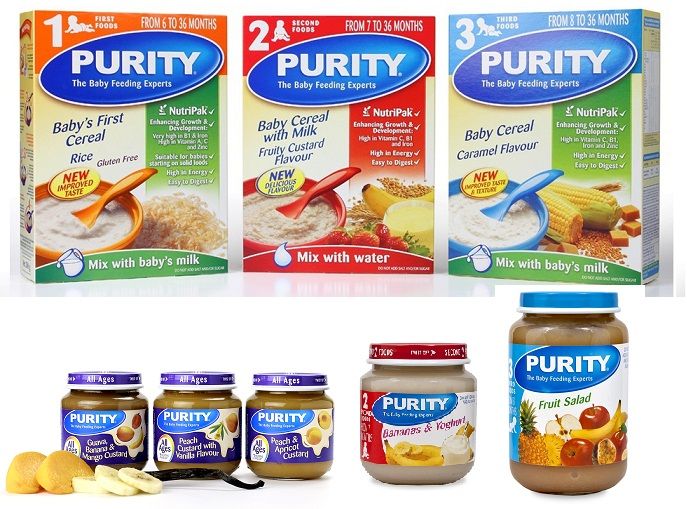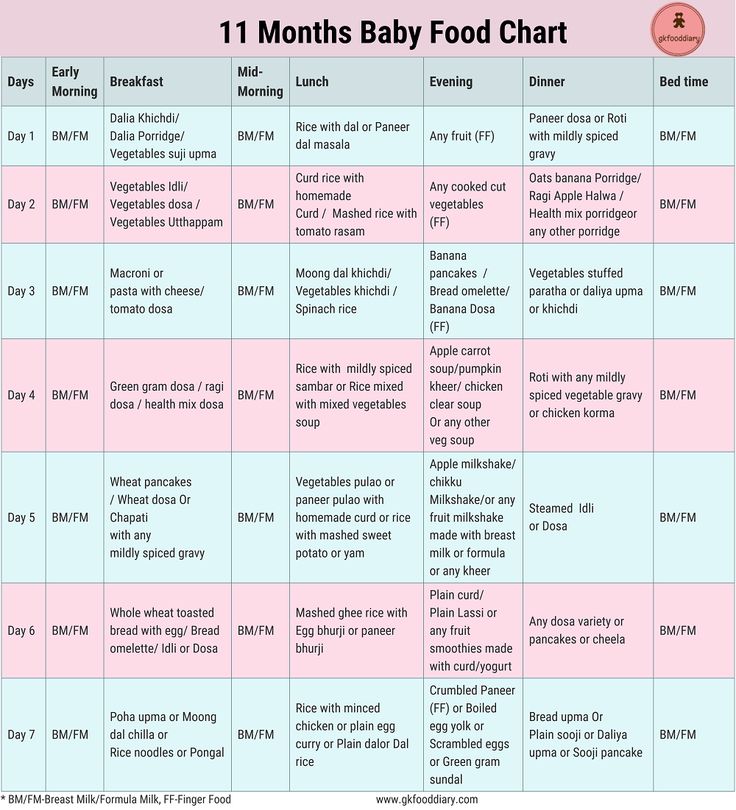How long to steam plums for baby food
Plum Baby Food Recipes
Plums are part of the wholesome stone-fruit family and are known for being rich in fiber, vitamins and minerals. If baby is experiencing discomfort due to constipation, plum baby food might help alleviate the ache and promote a good bowel movement. Once steamed and pureed, plum baby food is naturally sweet with a tart flavor that babies love.
Plum Benefits & Plum Nutrition Plums are high in fiber, which helps relieve constipation in adults and babies alike. Prunes (naturally dried plums) are also superfoods that help support a healthy digestive system. Plum baby food is a nourishing option for baby because it naturally contains Vitamin A and C.
When Can Babies Eat Plum? Plum baby food and prune baby food are both considered stage one baby foods and do not pose a high allergy risk, which is why babies 4 months and older can start eating plum puree baby food, with the approval of a pediatrician, of course.
How to Make Plum Baby Food?
The easiest and most efficient method for making plum baby food is to use a baby food maker, which steams and then processes the ingredients in one machine. Plum baby food can also be prepared by steaming or cooking the plums in a saucepan over a medium flame and then removing the pits and separately blending the cooked fruit using either a food processor, immersion blender or a regular blender.
Image: Karen Biton-Cohen
Step 1 of How to Make Plum Baby Food: Using a vegetable peeler, peel off the skin of ripe plums. If the plums are too soft, you can also use a paring knife and then your fingers to separate the skin from the fruit.
Image: Karen Biton-Cohen
Step 2 of How to Make Plum Baby Food: Remove the pit from each plum and roughly chop the fruit.
Image: Karen Biton-Cohen
Step 3 of How to Make Plum Baby Food: Add the chopped plums and their juices to the bowl of your baby food maker. Follow the instructions for your device and add as much water as needed to the steaming container.
Follow the instructions for your device and add as much water as needed to the steaming container.
Image: Karen Biton-Cohen
If you don’t have a baby food maker, you can steam the plums separately in a saucepan with a bit of water (which may not be necessary if your plums are very ripe and juicy) over a medium flame for about 15 to 20 minutes.
Image: Karen Biton-Cohen
Step 4 of How to Make Plum Baby Food: Once the steaming action is finished, blend until smooth using a food processor, blender or immersion blender. Or let the baby food machine do it for you, if you’re using one.
Image: Karen Biton-Cohen
Step 5 of How to Make Plum Baby Food: Once the plum puree has cooled completely, it can then be transferred to a serving bowl or freezer-safe containers. Prepared plum baby food keeps for one month in the freezer.
Plum Baby Food Recipes
Plum puree baby food is delicious on its own, but we also love blending it with other fruits for variety. Once you have established that baby doesn’t have any allergic reactions from eating plums or other fruits, there are different variations for plum baby purees. Below are our top three favorite plum baby food recipes:
Once you have established that baby doesn’t have any allergic reactions from eating plums or other fruits, there are different variations for plum baby purees. Below are our top three favorite plum baby food recipes:
Plum and Banana Baby Food Recipe
In a bowl mash a large, peeled banana. Blend with 1/2 cup plum baby food puree.
Plum and Peach Baby Food Recipe
Peel two very ripe peaches and remove the pits. Mash the peaches in a bowl, using the back of a fork or a potato-masher (you may also blend in a food processor or blender). Combine the mashed peaches and 1/2 cup plum baby food puree together.
Plum and Yogurt Baby Food Recipe
In a bowl, mix 1/2 cup of full-fat greek yogurt with 1/4 cup homemade plum puree until smooth. Whole milk yogurt can be introduced to baby at 7 to 8 months of age.
10 Easy And Delicious Plum Baby Food
Easy-to-prepare healthy recipes to help your little one enjoy the benefits of fruit.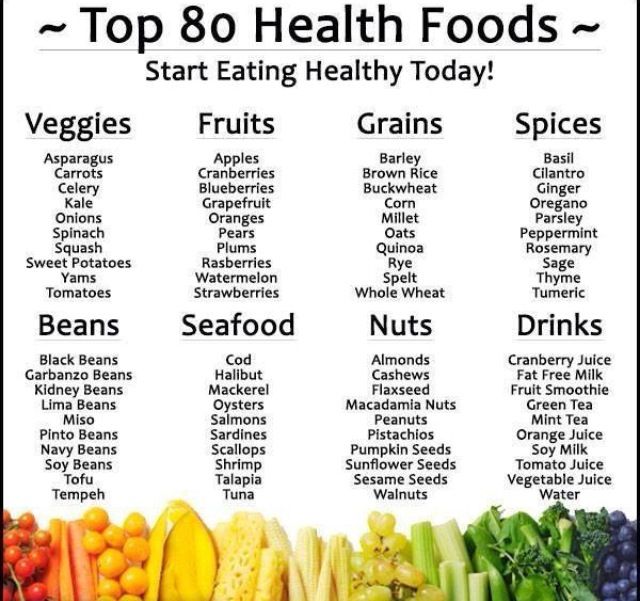
Research-backed
MomJunction believes in providing reliable, research-backed information to you. As per our strong editorial policy requirements, we base our health articles on references (citations) taken from authority sites, international journals, and research studies. However, if you find any incongruencies, feel free to write to us.
Image: Shutterstock
Plums are superfoods with health-promoting properties and high nutritional value. Many moms want to learn plum recipes for babies since common recipes may not be suitable and palatable. High amounts of phenolic compounds such as anthocyanins are secret behind various benefits of plums (1). Babies older than six months already taking solids can begin to eat plums as per pediatricians’ recommendations.
You may begin with simple plum recipes such as puree and in lesser quantities; otherwise, it can be hard for your baby’s immature digestive system. Read on to learn its benefits, how to incorporate them into a baby’s diet, and some healthy plum recipes for babies.
Health Benefits Of Plums For Babies
Plums are a low-calorie fruit that contains many vital vitamins, such as A, C, K, B and minerals such as potassium, copper, manganese, phosphorus, magnesium, and fiber, bioactive compounds, such as anthocyanins.
- Dried plums or prunes are associated with bone health due to its unique nutritional profile that contains major phenolic compounds (2).
- Both fresh and dried plums have laxative effects. as the fiber in it is mostly insoluble and contains sorbitol which has natural laxative effects. Thus, they are associated with healthy intestinal motility, thus keeping constipation at bay (3) (4).
- Plums contain phytochemicals such as cyanidin and lutein. Some studies show that regular consumption of plums could possibly have beneficial effects on brain functioning (5).
- Plums are considered a good source of phytonutrients such as flavonoids, neochlorogenic, and chlorogenic acid, which have high antioxidant activities.
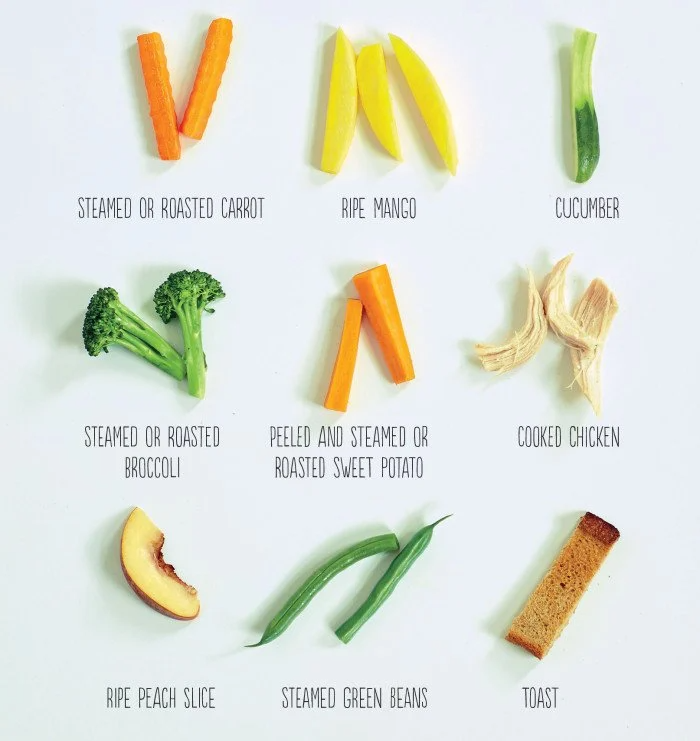 These compounds could help reduce inflammation and combat free radical damage in the long run (5).
These compounds could help reduce inflammation and combat free radical damage in the long run (5).
Besides these, plums are considered to have anti-inflammatory, anti-allergy, and antimicrobial properties, which are all beneficial for your infant.
If you are planning to add plums in your baby’s diet, then in the next section, we present the various plum recipes that you can consider for your baby.
Related: 10 Best Foods To Relieve Baby Constipation And Recipes To Try
Delicious Plum Recipes For Babies
1. Plum Puree:
Image : Shutterstock
This is the most basic baby food recipe that is ideal for babies who have started solids. As the baby progresses on solids, you can try adding different purees or mashed fruits to this recipe to intensify its nutritive value.
You will need:
- 1 cup fresh plums
- Water – Room temperature and ice-cold
How to:
- Wash the plums and let them dry.
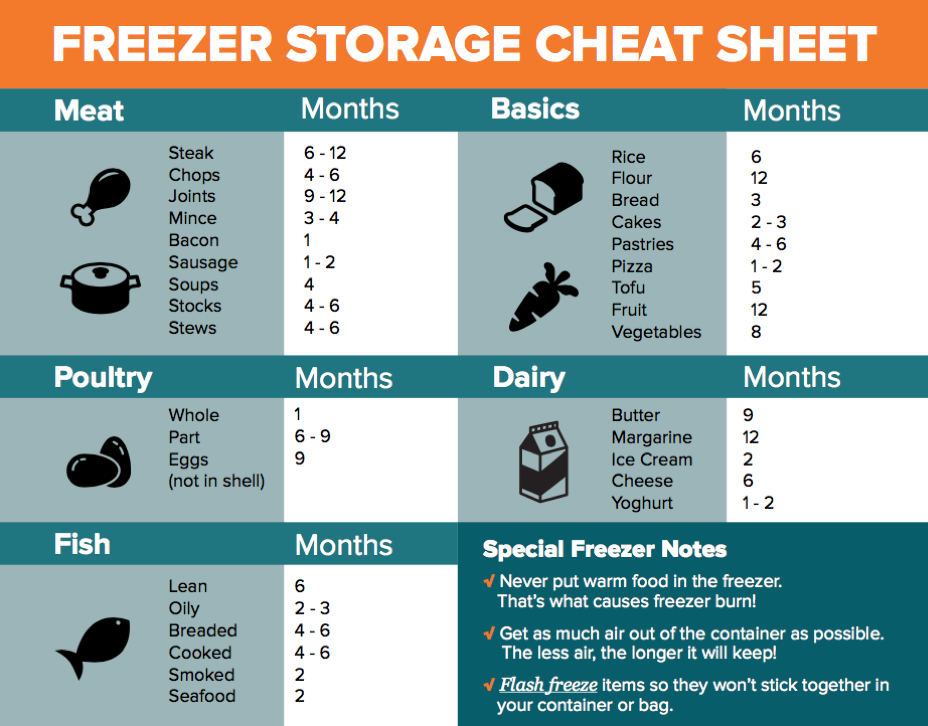 Add water in a pan and let it boil. Add the plums and let them stay in the boiling water for about 45 minutes. This process of treating plums is known as blanching. You may also try to steam them instead of blanching.
Add water in a pan and let it boil. Add the plums and let them stay in the boiling water for about 45 minutes. This process of treating plums is known as blanching. You may also try to steam them instead of blanching. - Meanwhile, put ice water in another pan and keep aside.
- Using a spoon, remove the plums from the hot water, and immediately transfer them into the ice-cold water.
- Remove the plum from the ice-cold water and use your fingers or a knife to peel off the skin.
- Slice the plums from the middle and remove the seeds. Puree the plum in a blender or mash it till soft. You can add water or a bit of breast milk or formula milk to make it creamy.
Related: 6 Helpful Tips For Storing Formula Milk For Your Baby
2. Plum yogurt:
Image : Shutterstock
This recipe is a step forward from basic plum puree. The addition of Greek yogurt improves the nutritional value of this plum baby food recipe. Besides, yogurt enhances the gut microbiota, which helps your baby’s digestive system remain robust.
You will need:
- 1 cup fresh plums
- 1 cup unsweetened plain Greek yogurt
How to:
- Make plum puree using fresh plums, as shown in the previous recipe.
- In a serving bowl, add plain yogurt and plum puree. Mix well and serve.
- You may also add a half-teaspoon dry fruit powder to this recipe before serving it to your baby.
Related: 8 Easy Greek Yogurt Recipes For Babies
3. Oats and plum porridge:
Image : Shutterstock
The high fiber content of plums and oats helps boost your baby’s digestive microflora. Besides, the rich micronutrient composition of this recipe supports your baby’s healthy growth and development.
You will need:
- 1 cup rolled oats
- 1 cup full-cream milk
- ½ cup fresh plums
- Water
How to:
- In a pan, add the milk and oats and cook according to the instructions given on the packet.
 Remove and keep aside.
Remove and keep aside. - Meanwhile, boil water in a pan and add the plums. After about 45 seconds, take them out using a spoon. Place them in chilled water and remove the peel.
- Once cool, mash the plums using your fingers.
- Add the mashed plum to the oats porridge.
- If you wish, you may also add some finely sliced or powdered cinnamon, dried fruits such as almonds, walnuts, and pistachio to this recipe. This will boost the nutritive value of the recipe multi-folds.
4. Baked plums with cinnamon:
Image : Shutterstock
Cinnamon has several health benefits when consumed regularly, and makes a good addition to your baby’s diet. The spice can be added to a variety of recipes to enhance their nutritive composition.
You will need:
- 1 cup fresh plums
- 1 tsp cinnamon powder
- 2 tbsp apple juice
How to:
- Preheat the oven to 400°F (204°C).

- Slice plums in half and remove the seed. Place them in an oven-safe dish.
- Add apple juice and sprinkle some cinnamon powder over the top.
- Cover the dish and bake for about 25 minutes or till the plums turn tender.
- Once cool, remove the skin and mash using your fingers.
- Serve the recipe warm with some toasted bread slices.
Related: 7-Month-Old Baby's Food: Solids, Food Chart And Recipes
5. Roasted plums with yogurt:
Image : Shutterstock
This recipe is yet another version of plum puree with yogurt. Here the plums are roasted instead of being blanched or steamed. This way of cooking enhances the flavor of the plums and makes the recipe more delectable.
You will need:
- 1 cup fresh plums
- 1 cup unsweetened plain yogurt
- 1 tsp vanilla pod or essence
- 1 tbsp unsalted butter
- Pure maple syrup
How to:
- Preheat the oven to 375°F (190°C).

- Slice plums in half and remove the seed. Place them in an oven-safe dish with the cut portion on the top.
- Place a small piece of the vanilla pod on each plum piece. Also, add a little butter and a drop of maple syrup on each piece.
- Place in the oven and roast for about 30 minutes or till the plums turn tender.
- Once cool, remove the skin, mash, and serve as a puree mixed with yogurt.
6. Frozen plum puree:
Image : Shutterstock
Most babies find ice creams and candies attractive. You can satiate your baby’s craving for cold desserts through this frozen plum puree recipe. This recipe is delicious and nutritious. Besides, this preparation might help soothe the aching gums of teething babies.
You will need:
- 1 cup fresh plums
- Water
How to:
- Cut plums in half and remove the seed.
- In a pan, add water. Place the plums in the pan with the cut portion facing the water.
 Let it simmer on low to medium heat till plums turn tender.
Let it simmer on low to medium heat till plums turn tender. - Once cool, remove the skin.
- Add the plums and the water to a blender and make a puree. Add more water to get a liquidy consistency. Place into an ice tray and freeze the baby plum puree.
- Take out of the freezer just when you are ready to serve the same to your baby.
7. Plum Jam:
Image : Shutterstock
Babies enjoy having jam due to its semi-solid consistency. However, the high sugar content is a concern. This plum jam recipe uses the natural sweetness of plum instead of added sugar. You can serve plum jam to your baby with a slice of wholegrain bread or crackers.
You will need:
- 1 cup fresh plums
- 1 tbsp ground allspice (optional)
- 1 tsp cinnamon powder
- Water
How to:
- Cut the plums in half and remove the seeds. Place in a pan and add water and sugar. Let it boil till the plums are soft.

- Remove from heat and puree. Add the puree back to the pan and add allspice and cinnamon. Cook on low heat till it becomes thick, just like jam. Remove and let it cool before storing it.
- Store the prepared jam in an air-tight container in your refrigerator and label the date of preparation.
- Ensure to finish the jam within a stipulated time as homemade jams tend to expire faster than commercial ones.
8. Plums and bananas with quinoa
Image: Shutterstock
Quinoa is a pseudocereal that makes a healthy addition to an infant’s diet. The nutritional properties of quinoa are promising, and its regular consumption is associated with several health benefits. This recipe is an interesting combination of quinoa with plums that will become your baby’s favorite in no time.
Note: This recipe contains cow’s milk and is suitable for babies older than 12 months. It is important that the quinoa is dehulled and your baby is not allergic to it.
You will need:
- 1 cup fresh plums
- 1 banana (mashed)
- ½ cup quinoa
- 1 cup full-cream cow’s milk
- 1 tsp cinnamon powder
How to:
- Cook quinoa in milk as per the directions given on the packet of quinoa.
- Add deseeded and peeled plums with the banana in a blender. Blend till you get a smooth semi-fluid consistency of the paste.
- Add the paste to quinoa porridge. Sprinkle some cinnamon on top and serve it to your baby while it is still warm.
9. Plum and ginger smoothie
Image: Shutterstock
Smoothies are easy to prepare, easy to digest, and can also meet your growing baby’s nutritional needs. This smoothie recipe is a blend of plums and banana with a dash of ginger juice.
You will need:
- 1 cup fresh plums
- 1 medium-sized banana
- 1 tsp ginger juice
- 1 tbsp dried fruits powder
- 1 cup water
How to:
- Place the plums in a pan and add water.
 Let it boil till the plums turn tender. Remove from water, blend to a puree, and keep it aside for a while.
Let it boil till the plums turn tender. Remove from water, blend to a puree, and keep it aside for a while. - Add sliced banana, ginger juice, and dried fruit powder in the blender and blend until thoroughly mixed.
- Add plum puree to the mix and blend once again. Ensure that the mix has no lumps. Add water to dilute the smoothie, if required. Strain the smoothie to remove any excess residual.
- Pour it into your baby’s sipper cup and serve.
Related: Ginger For Babies: When To Start, Benefits And Precautions
10. Plum, peach, apricot, and thyme custard
Image: Shutterstock
This recipe brings the sweetness and creaminess of custard, along with nutrition from selected stone fruits like plum, peach, and apricot. It is a suitable recipe for babies older than six months. Before introducing it to your baby, check for any possible allergies.
Note: This recipe contains cow’s milk and is suitable for babies older than 12 months.
You will need:
- 1 ½ tbsp custard powder
- 1½ cup full-cream cow’s milk
- ½ cup plums
- ½ cup peach
- ½ cup apricot
- 1 tsp nuts (fine-chopped)
- A pinch of thyme
How to:
- Preheat the oven to 350°F (176°C).
- Cut the fruits and remove seeds. Place the fruits in an oven-safe dish with a cut portion facing down. Pour cold water over the fruits. Bake for about 40 minutes or until the fruits are tender.
- Once cool, remove the skin. Place fruits in a blender and blend well until you get a smooth paste. Keep the puree aside for a while.
- For the custard, take a small bowl and put custard powder in it. Now, add one-fourth cup of milk to it and mix well with a continuous whisk. Stir continuously to Ensure there are no lumps. Once done, set aside.
- Now, heat the remainder of the milk in a pan. After five minutes of bubbling, simmer it and add custard powder slowly to the milk while stirring the milk continuously.

- Mix until the mixture thickens to a creamy consistency. Switch off the flame once done and keep the pan aside to cool.
- Once the custard and milk mixture has cooled, add the fruit puree to it with some finely sliced fruit pieces. Refrigerate the final mix for 20 minutes.
- Serve with some finely sliced nuts and serve it to your baby at room temperature.
1. What can I mix with plum for baby food?
You can prepare a lump-free plum puree or mash and mix it with different foods, such as Greek yogurt, porridge, and oatmeal. Alternatively, you can mix plum puree/mash to puree/mash of other fruits and veggies to make nutritious baby foods. As your baby grows, you can serve them soft and ripe plum slices to practice self-feeding.
2. How do I introduce plums to my baby?
Like any other food, feed plum puree or mash to your baby in small quantities initially. Once the baby adjusts to the fruit’s taste and digestibility, gradually increase the puree/mash quantity. As stated above, you can also add plums to other foods in age-appropriate ways to enhance the overall nutritional value of the dish.
As stated above, you can also add plums to other foods in age-appropriate ways to enhance the overall nutritional value of the dish.
Knowing some plum baby food recipes can be helpful for moms. Dried and fresh plums are delicious and rich sources of essential nutrients such as vitamin A, C, E, and K, including potassium, magnesium, and phosphorus. This also contains fibers that promote digestive health. You may give cooked plums to babies since they may not be able to digest fresh fruit and cause abdominal pain or discomfort. Plum puree, plum yogurt, oats, and plum porridge are some of the easiest plum recipes for infants.
References:
1. Igwe and Charlton; A Systematic Review on the Health Effects of Plums (Prunus domestica and Prunus salicina); National Center For Biotechnology Information
2. Taylor C. Wallace; Dried Plums, Prunes and Bone Health: A Comprehensive Review; National Center For Biotechnology Information
3. Stacewicz-Sapuntzakis M; Dried plums and their products: composition and health effects–an updated review.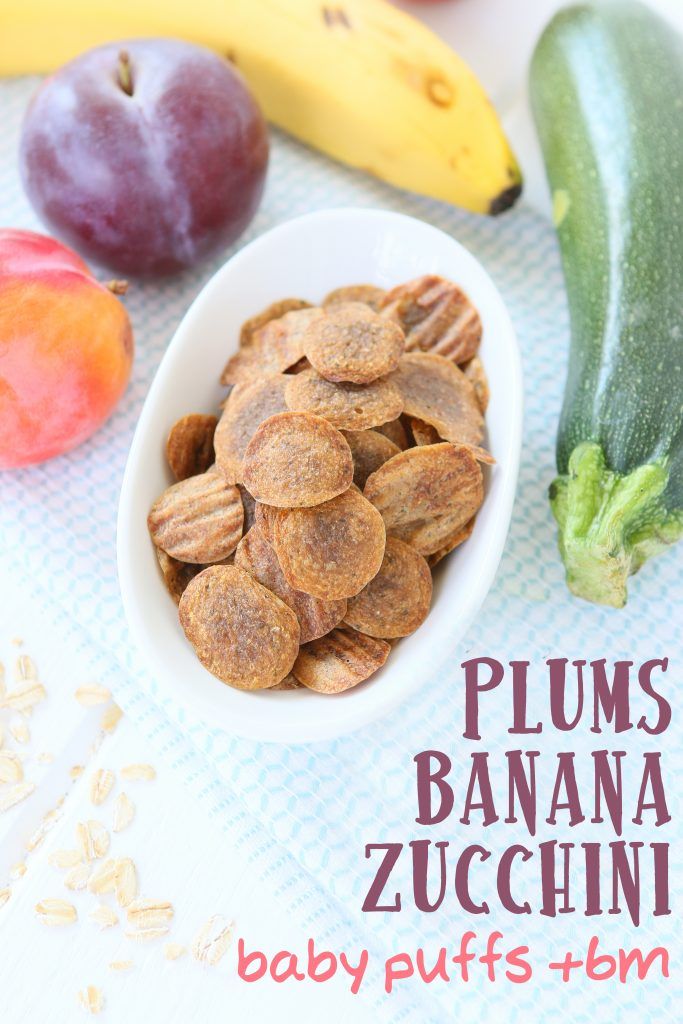 ; National Center For Biotechnology Information
; National Center For Biotechnology Information
4. Ezinne Igwe and Karen Charlton; A Systematic Review on the Health Effects of Plums ( Prunus domestica and Prunus salicina ); Researchgate
5. Raj K. Keservani et al.; Medicinal Effect of Nutraceutical Fruits for the Cognition and Brain Health; National Center For Biotechnology Information
The following two tabs change content below.
- Reviewer
- Author
Swati Patwal is a clinical nutritionist, a Certified Diabetes Educator (CDE) and a toddler mom with over eight years of experience in diverse fields of nutrition. She started her career as a CSR project coordinator for a healthy eating and active lifestyle project catering to school children. Then she worked as a nutrition faculty and clinical nutrition coach in different...
View Profile ›
Seeemaa Budhraja is a Delhi-based dietitian and nutritionist. She specializes in weight and lifestyle management.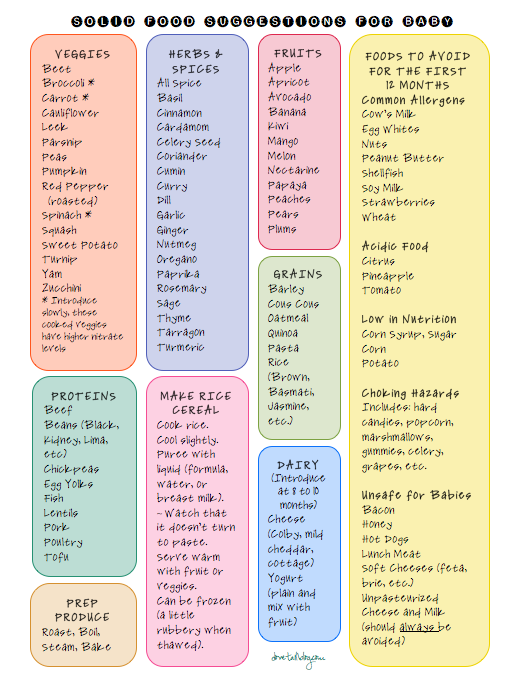 She is a healthy recipe designer, works as a health motivator and wellness coach as well. She has worked as a slimming head with one of the top organizations in India. She excels in therapeutic diets for various lifestyle-related diseases. This renowned nutritionist is a...
She is a healthy recipe designer, works as a health motivator and wellness coach as well. She has worked as a slimming head with one of the top organizations in India. She excels in therapeutic diets for various lifestyle-related diseases. This renowned nutritionist is a...
View Profile ›
Plum puree - Encyclopedia Baby food
Recipes 7-8 months Gluten-free Milk-free Flour-free Meat-free Sugar-free Egg-free Boil Second breakfast Low-calorie Lunch First food Snack Cooked Puree Dinner Fruits and berries
No comments
Levchuk Victoria ©
Summer is a great time to introduce your child to plums. Approximately this happens at 7-8 months, after the baby has met an apple and a pear. For the first feeding, you need to pick up a sweet variety of yellow plum. For plum puree, you need to choose ripe juicy fruits, without visible defects and living creatures inside. nine0003
Plum puree is a thin, sour, sweet and sour baby puree. Since the plum consists of veins, therefore, a blender is not enough for uniform grinding. You also need to pass plum puree through a sieve for the first feeding. The color of baby puree is obtained in the form of a “childish surprise”, for density, you can add rice flakes or flour, and if you add boiled water, you get juice with pulp.
Since the plum consists of veins, therefore, a blender is not enough for uniform grinding. You also need to pass plum puree through a sieve for the first feeding. The color of baby puree is obtained in the form of a “childish surprise”, for density, you can add rice flakes or flour, and if you add boiled water, you get juice with pulp.
Please note that the plum sweetens the stool, so the child should not be given more than the prescribed norm. In case of too loose stools, immediately stop giving plums. nine0007
The honey plum itself is tasty and sweet, but after the blender sourness appears, the aftertaste on the tongue is knitting. You need to preserve such a product only with sugar, because because of the acid it will quickly start to turn sour and disappear.
If the child does not like the sourness in the plum, then it is best to combine it with already familiar fruits, namely apples and pears. But the plum is best combined with sweet foods, namely a banana.
Plum puree
| Banana puree for babies Introducing fruits to your baby, of course, begins with puree. And it's best to start with a banana. It does not cause allergies, and at the same time is high-calorie and nutritious. So let's figure out how to make healthy banana puree for babies. nine0003 | Prune puree for babies The first food for babies is very important. And mothers need to approach the choice of products for such a diet responsibly. Today we want to offer you several recipes for prune puree for babies. But we must remember that this fruit has laxative properties. |
| Baby Applesauce An apple is one of the first fruits a baby is introduced to. Acquaintance begins at 2 months with apple juice. And already at 4-5 months, the baby can cook applesauce. That's what we'll talk about today in our article. | Carrot puree for babies Many parents choose vegetable puree for the first feeding of babies, and children are happy to get acquainted with new tastes. The first purees are usually one-component. We suggest you cook carrot puree for your baby. |
Baby plum puree recipe
Baby plum puree recipe is simple even for those who don't know how or don't like to cook.
If the berries are not too sour, it is better not to add sugar syrup to the puree. It should be remembered that sugar, like salt, is used in minimal quantities in the child's diet. nine0003
Sugar syrup
Mix 10 g of sugar with 50 ml of water.
The solution is boiled, stirring, over low heat for 10 minutes, filtered through several layers of sterile or boiled gauze, topped up with boiling water through the same filter to a volume of 100 ml and boiled again.
More delicious and healthy for babies and nursing mothers: RECIPES
Pour the hot syrup into a pre-boiled glass bottle and close tightly.
But remember that excessive consumption of sugar can lead to obesity and tooth decay in a child at an older age. nine0003
Plum puree for babies In our recipes, you can change the number of servings and the required amount of ingredients will automatically change on the website. By clicking on the links in the recipe, you can easily select the baby's menu according to the desired criteria.
- Select undamaged berries, without dark spots, rinse in running water, pour over with boiling water and remove the seeds.
- Rub the berries thoroughly through a sieve to separate the skins.
- Add sugar syrup to puree.
You can prepare more puree and freeze the finished puree in portions in special forms. It is easy to warm up and feed the baby.
! Recommendation: Do not use sugar, salt and spices in children's meals.
This recipe is perfect for baby food but will be a great meal for babies of all ages.
| All information posted on the site is for informational purposes only and cannot be used for self-treatment. Having acquired specific applied knowledge, do not experiment with the health of the child. When symptoms of the disease appear, the immediate help of a specialist is necessary. nine0003 Never make a decision without discussing the issue with a doctor - consultation with a pediatrician is required! |
When can I give my baby plums and plum puree as complementary foods?
Fresh stone fruit should be included in the child's diet. The nutrients they contain are necessary for proper growth and development. Take at least plums. They are nutritious, high in fiber and sugars, and help young children relieve constipation. Let's figure out at what age they can be given, in what form and quantity. nine0003
Photo: Depositphotos.com. Author: filipw.
Benefits for the child
Plum contains the following useful substances:
- Vitamins of group B contribute to the full development of the baby's nervous system, prevent excessive anxiety.

- Vitamin C has an anti-inflammatory effect, helps the child's body fight viruses and significantly strengthens the immune system.
- Provitamin A has a beneficial effect on children's vision, stops its deterioration. nine0213
- Vitamins of the P group (or bioflavonoids) strengthen the baby's blood vessels, prevent fluctuations in blood pressure when the weather changes (that is, help fight weather dependence).
- Sodium prevents swelling, which is fortunately rare in children.
- Calcium is an essential element for a growing organism. Its sufficient content in plum fruits improves the condition of the bones of the child and the health of the teeth.
- Potassium has a positive effect on the functioning of the cardiovascular system; nine0213
- Copper is required for the growth and proper development of the baby.
Plum contains a large number of other minerals: nickel, silicon, fluorine, manganese, zinc, iodine, phosphorus and others.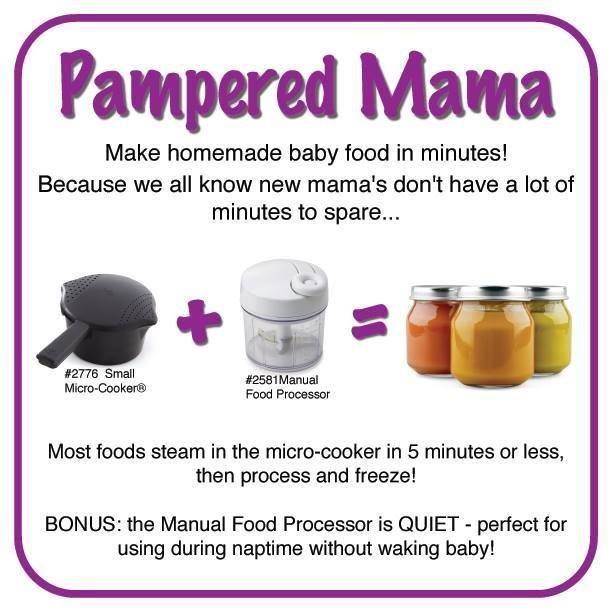
This stone fruit culture will be useful for babies with intestinal disorders. The fruits have a mild laxative effect, helping the child cope with constipation. The laxative effect of plum stems from the content in its composition of a special substance - isatin and a high level of fiber. nine0029 b2 (riboflavin)
When and how much to give?
Photo: Depositphotos.com Copyright: Lovelymama
Plums are introduced into complementary foods not earlier than 8-9months. But American pediatricians are allowed to give plum puree to a child as early as 6 months. It is important that by the time you get to know this product, the baby has already tried most other fruits, including stone fruits, and they have not caused allergies.
It is advisable to choose yellow for the first feeding plums - they are less likely to cause allergies. The most suitable dishes for the baby are mashed potatoes and compote.
At first, plum puree should be added to fruits already familiar to the baby, such as an apple. No more spoons needed. Gradually, in the absence of allergies, the volume of plums in fruit puree is increased, and then they switch to monocomponent plum puree. nine0003
Compote from dried plums (prunes) is better absorbed by the baby's body. For the first time, it is advisable to give the child no more than 20 ml of the drink. If within three days there are no signs of allergy, the portion can be gradually increased.
When a child has severe bowel problems that cause frequent constipation, the pediatrician may recommend a prune decoction from as early as 4 months of age. But such early complementary foods should be carried out exclusively under the supervision of a doctor and with great care. nine0003
nine0003
Why not suitable for first complementary foods?
- Plum is a product that often causes allergies in babies. Therefore, its introduction into complementary foods is permissible only after other fruits, which are less likely to cause an undesirable reaction of the body.
- In addition, plum fruits have a laxative effect. It is difficult to predict to what extent the child's body will react to this product, if nothing but breast milk or formula has not yet been tested.
- The fruit has a serious effect on the acidic environment of the stomach. Therefore, you should first prepare the baby's body for a new product with another, more gentle food for the gastric mucosa. nine0213
- And last but not least, weaning food should start with vegetables. And after sweet and tasty fruits, the child often refuses them.
Selection Tips
In order for plums to benefit a child's body, the fruits must be carefully selected.
- Only ripe specimens without dents should be taken.
 Be sure to check the fruit for rotten areas. Even with minimal damage, it is strictly forbidden to give fruits to the baby. nine0213
Be sure to check the fruit for rotten areas. Even with minimal damage, it is strictly forbidden to give fruits to the baby. nine0213 - There are more than 2,000 varieties of plums in the world, so it is simply impossible to list all suitable for a child. But sweet varieties (fast-growing, blue gift, etc.) will please the baby more, while their acidity is relatively low.
- Due to the high allergenicity of plums, it is advisable to choose yellow or white fruits. When using red and purple specimens, allergic risks increase.
- Buy fruits for your child that have been grown and harvested near where you live. "Native" fruits will bring much more benefits than "overseas". nine0213
A selection of children's recipes
To preserve the maximum of vitamins and minerals in plum food, it is necessary to prepare it correctly. Usually, two dishes are perfect for children under one year old: mashed potatoes and compote.
Plum puree
- Be sure to thoroughly wash the fruits, pour boiling water over them and immediately remove the scalded skin with a thin knife.

- Then cut the plum into 2 halves and remove the pit.
- Place in blender and blend until smooth. nine0213
- If the baby puree is too thick, you can dilute it with a little water.
Chicken purée
If your baby has already switched to meat and has become familiar with chicken meat, you can prepare plum purée with chicken for him.
Recipe recommended for children over 8 months old.
- Take 3 plums, peeled, pitted and cut into cubes.
- Cut one chicken fillet in the same way. nine0213
- Put everything together in a saucepan, add a glass of water and simmer until the meat is tender.
- Let cool slightly and puree the contents of the saucepan with a blender.
Compote
Plum compote requires 250 g of fruit and 750 g of water. If the compote is intended for a child older than a year, you can add a couple of tablespoons of sugar.
- Wash and pit the plums.
- Place in cold water, add sugar if necessary.
 nine0213
nine0213 - Put on fire. After boiling, cook the compote for 2 minutes.
- Cover the saucepan with a lid and leave to infuse.
After 2-3 hours, you can already give compote to the baby. If your child is just getting to know a new fruit, be sure to strain the drink before serving.
Preparing for the winter
If the age at which plum can be introduced into complementary foods falls in winter, it is better to take care of preparing mashed potatoes for the winter in advance.
- Rinse the fruits, peel and remove the stones.
- Steam for 2-3 minutes to soften.
- Grind with a blender and heat without boiling.
- Pour the finished puree into sterilized jars to the brim, close with lids.
- Cool at room temperature by turning jars upside down.
The ripest and sweetest fruits are chosen for winter harvesting.
Caution does not hurt
Despite the benefits of plum for the baby, before introducing it into complementary foods, contraindications must be considered:
- If your child has gastrointestinal problems or does not respond well to new foods, eating plums will aggravate the situation.

- It is undesirable for children under three years of age to give such fruits in their usual form - whole or in halves. This can injure the delicate lining of the stomach. In addition, the baby can swallow the bone or even choke on it.
- When a child has diarrhea, plums should be completely excluded from the diet, including in the form of compote from these fruits.
Plum puree and compotes should be prepared in August-September. During this period, fruits ripen naturally, without the participation of harmful fertilizers, and contain all the necessary vitamins. Fruits bought at other times of the year, no matter how attractive at first glance they may be, are not recommended for children. nine0003
Do not be surprised if your child develops diarrhea after eating plum puree, as the product contains laxatives. Most of them are concentrated in the fruit peel, which is why its removal significantly reduces the likelihood of diarrhea in the baby. If this still happened, you need to postpone the plum food for at least half a month and next time start the food with a smaller portion.
If this still happened, you need to postpone the plum food for at least half a month and next time start the food with a smaller portion.
Allergy to plums
Plums are contraindicated in children prone to allergic reactions. This fruit often causes allergies, so you should postpone its introduction into complementary foods until three years old, when the baby's gastrointestinal tract is fully formed. nine0003
Experts associate negative body response to plum with sensitivity to birch pollen. Therefore, if one of the parents suffers from seasonal reactions, the likelihood of an allergy in the baby is high.
In addition to plums, the following food products are correlated with intolerance to birch pollen:
- fruits: apples, pears, peaches, cherries, kiwi;
- vegetables and herbs: carrots, fennel, potatoes, spinach and celery;
- nuts: peanuts and hazelnuts; nine0213
- buckwheat;
- flower honey.

The allergens in plums are not destroyed by heat treatment, as some mistakenly believe. Therefore, fruits boiled or scalded with boiling water do not become safer for particularly sensitive babies.
Companion products
Plums are introduced into the baby's complementary foods at the same time as fruits such as light cherries, peaches, nectarines and apricots. Apricots contain a large amount of folic acid, which improves the appetite of little ones. And the beneficial substances in the composition of nectarines and peaches normalize digestion and strengthen the baby's immunity. nine0003
Here we should not forget that after getting acquainted with a new fruit, at least a week should pass. Only then can something new be introduced into complementary foods.
When the baby's menu becomes more varied, plums are used together with other healthy ingredients. Its ripe fruits go well with the following products:
- apples;
- blueberry;
- apricots;
- cranberry;
- peaches;
- nectarines;
- melon; nine0213
- chicken;
- yogurt.


 What are the benefits of plums? When and at what age can they be given to a baby? nine0003
What are the benefits of plums? When and at what age can they be given to a baby? nine0003 
 In difficult cases, there may be swelling in the lips and tongue. At the first symptoms of a similar etymology, it is urgent to stop giving dishes from plums to the child and seek help from a pediatrician.
In difficult cases, there may be swelling in the lips and tongue. At the first symptoms of a similar etymology, it is urgent to stop giving dishes from plums to the child and seek help from a pediatrician.  .. - Vitamin complexes, probiotics, omega-3 from Garden of Life, designed specifically for pregnant women Learn more >
.. - Vitamin complexes, probiotics, omega-3 from Garden of Life, designed specifically for pregnant women Learn more > 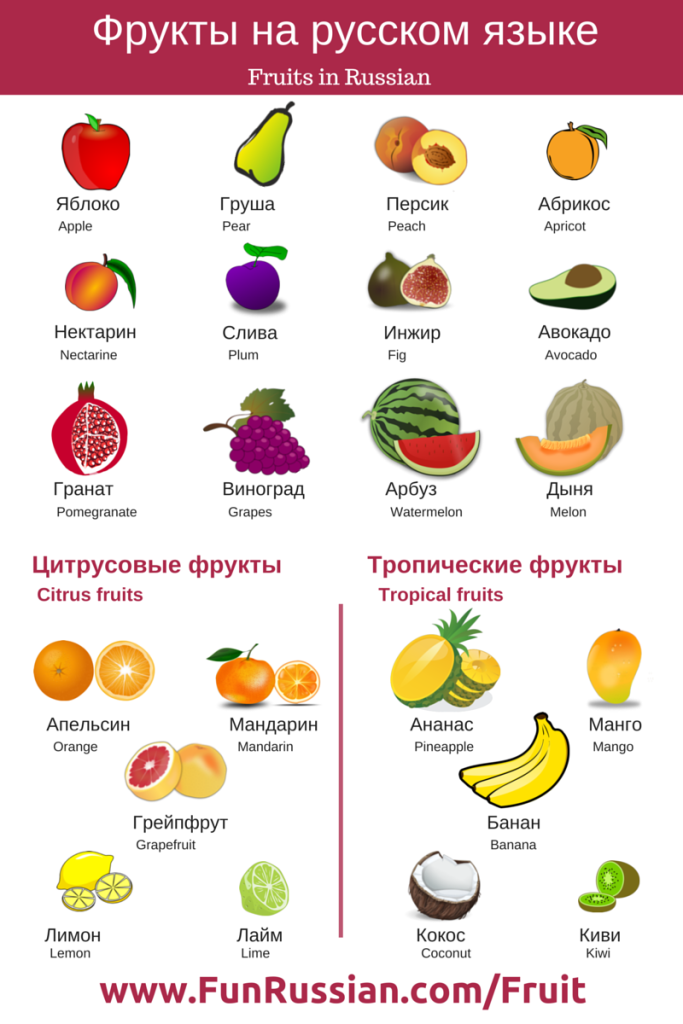 This dish can help with constipation in infants. It is not worth offering it to a child in large quantities, because. there is a risk of getting diarrhea, and it threatens to wash out nutrients and dehydrate the body. nine0003
This dish can help with constipation in infants. It is not worth offering it to a child in large quantities, because. there is a risk of getting diarrhea, and it threatens to wash out nutrients and dehydrate the body. nine0003 

 Housewives are actively beginning to save pieces of summer for the winter in the form of jams, compotes and jellies. Each woman has her own optimal recipe for preserving different berries, and, as a rule, an exorbitant amount of sugar is a preservative in it.
Housewives are actively beginning to save pieces of summer for the winter in the form of jams, compotes and jellies. Each woman has her own optimal recipe for preserving different berries, and, as a rule, an exorbitant amount of sugar is a preservative in it.  nine0003
nine0003  You can freeze the puree in plastic disposable glasses, and then transfer the resulting briquettes into one bag.
You can freeze the puree in plastic disposable glasses, and then transfer the resulting briquettes into one bag.  nine0003
nine0003 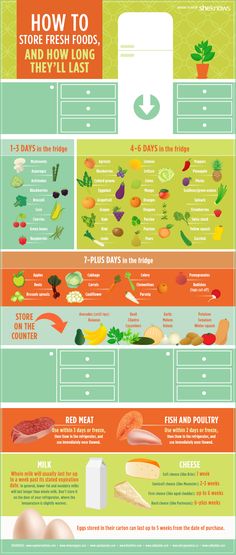 The fruits from cooking will become softer, and after cooling them, you can rub the pulp through a sieve or with a blender. The resulting plum emulsion must be boiled and placed in sterile jars.
The fruits from cooking will become softer, and after cooling them, you can rub the pulp through a sieve or with a blender. The resulting plum emulsion must be boiled and placed in sterile jars. 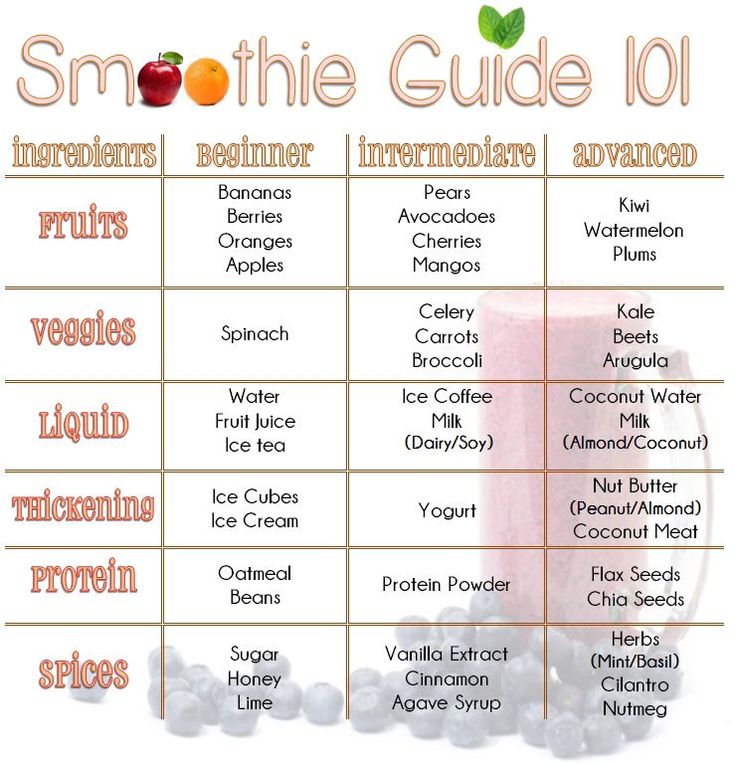 The remaining pulp must be carefully ground to a state of homogeneous mass. If the emulsion turned out to be too thick, you can dilute it a little with water, and then be sure to boil it. Healthy prune puree for babies is ready, it remains only to cool it. nine0003
The remaining pulp must be carefully ground to a state of homogeneous mass. If the emulsion turned out to be too thick, you can dilute it a little with water, and then be sure to boil it. Healthy prune puree for babies is ready, it remains only to cool it. nine0003 
 nine0003
nine0003  In the meantime, sterilize the canning container. Place the jars upside down in a saucepan or bowl with lids next to them. Pour some water into the pan (no more than a liter), bring to a boil and boil the container for 10 minutes. nine0003
In the meantime, sterilize the canning container. Place the jars upside down in a saucepan or bowl with lids next to them. Pour some water into the pan (no more than a liter), bring to a boil and boil the container for 10 minutes. nine0003  Start with half a teaspoon, gradually moving to one full feeding.
Start with half a teaspoon, gradually moving to one full feeding.  Plum puree contains a sufficiently large amount of potassium and phosphorus, which is especially beneficial for the nervous system of a little man. Now we will tell you how to make plum puree for babies. nine0003
Plum puree contains a sufficiently large amount of potassium and phosphorus, which is especially beneficial for the nervous system of a little man. Now we will tell you how to make plum puree for babies. nine0003 
 Read our helpful tips and make the first complementary foods for your baby. nine0003
Read our helpful tips and make the first complementary foods for your baby. nine0003 

